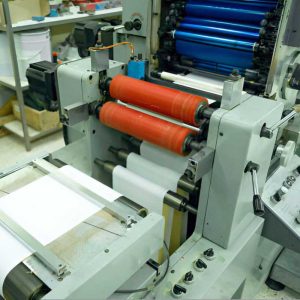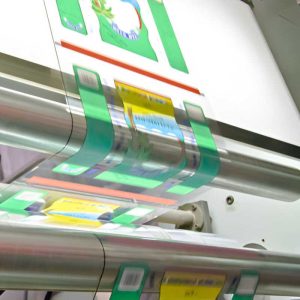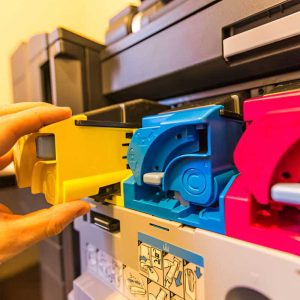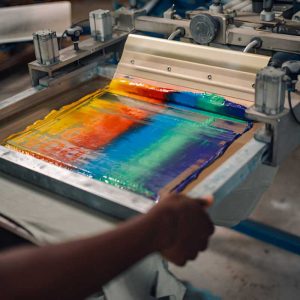Packaging pouches play an essential role in preserving and showcasing products. Whether it’s food items, cosmetics, or household goods, the right packaging not only keeps a product safe but also makes it attractive to consumers. One key aspect of this process is the printing technique used on the packaging. Printing makes the packaging appealing and helps convey important information, such as branding, ingredients, and instructions.
Different printing techniques are available, each with unique benefits and applications. Knowing the differences can help businesses choose the best option for their needs, ensuring they create an eye-catching product that also meets their practical requirements. In this post, we will cover the top 5 printing techniques for packaging pouches, explaining how each works, and what makes them suitable for different types of packaging.
Table of Contents
ToggleTop 5 Printing Techniques for Stand-Up Packaging Pouches
1. Flexographic Printing

Flexographic printing, often called “flexo,” is one of the most popular methods used for packaging pouches. It involves using flexible printing plates made of rubber, Photopolymer, or plastic, which are wrapped around a rotating cylinder. Ink is transferred onto these plates and then printed onto the material, such as plastic, film, or paper, that forms the pouch.
One of the main advantages of flexographic printing is its speed. It is a fast and efficient technique, which makes it suitable for large print runs. The process is also quite versatile, as it can be used on a wide range of materials, including plastic films, paper, and even metallic foils. Another key benefit is that the inks used in flexo printing dry quickly, which helps to speed up the entire printing process. This method is ideal for businesses looking for cost-effective printing on high volumes of packaging pouches.
However, flexographic printing is not without its limitations. The quality of the images produced may not be as sharp or detailed as some other printing methods. If your packaging requires intricate designs or high-resolution graphics, you may need to consider a different printing technique.
2. Gravure Printing

Gravure printing is another common method used for packaging pouches. In this process, the image is engraved onto a cylindrical surface, and ink is applied to fill the engraved areas. Excess ink is wiped away, leaving only the ink in the recessed areas, which is then transferred onto the packaging material.
Gravure printing is known for its excellent image quality, making it ideal for packaging that requires high-quality graphics and vibrant colors. The process works well on a variety of materials, including plastic films and paper. It is a good option for brands that want their packaging to stand out with bold colors and detailed designs.
The main drawback of gravure printing is its cost. The engraving of the cylinders used in the process can be expensive, which means it is generally only cost-effective for large production runs. Additionally, the setup time for gravure printing can be quite long, so it may not be the best choice for projects with tight deadlines or smaller quantities.
3. Digital Printing

Digital printing is a newer technology compared to flexo and gravure, and it has quickly gained popularity for packaging pouches. Unlike traditional printing methods, digital printing does not require the use of printing plates or cylinders. Instead, the design is printed directly onto the material using digital files or digitally printed adhesives.
Want To Print Something?
One of the major benefits of digital printing is its flexibility. Since it does not require the creation of printing plates, it is ideal for stand-up pouch short print runs and customized packaging. This makes it an excellent choice for businesses looking to print small batches or limited editions of their product packaging. Digital printing is also known for its high-quality graphics, as it can produce sharp and detailed images.
However, digital printing can be more expensive per unit compared to other printing methods when used for large production runs. It is best suited for smaller quantities or for packaging that requires frequent changes to the design. For large print volumes, other methods like flexographic or gravure printing may be more cost-effective.
4. Offset Printing

Offset printing, although less common for flexible packaging pouches, is still used in some cases where high-quality image reproduction is needed. In this method, the image is first transferred onto a rubber blanket before being applied to the packaging material. This “offset” step helps create a smooth and even print.
Offset printing is known for its ability to produce high-quality images and is commonly used for printing labels or packaging that requires a lot of detail. It also allows for the use of a wide variety of colors and finishes, such as metallic or glossy effects, making it a good option for brands that want their packaging to have a premium look.
The downside to offset printing is that it is not as efficient for flexible packaging as other methods like flexographic or gravure printing. The setup costs are also quite high, making it more suitable for large production runs. For businesses focused on flexible packaging pouches, offset printing is usually not the first choice, but it can be used for smaller, rigid labels or elements that need to be added to the pouch.
5. Screen Printing

Screen printing is a technique where ink is pressed through a mesh screen to create a design on the packaging material. This method is often used for flexible packaging when a more tactile, raised effect is desired. The ink used in screen printing is thicker than in other methods, which results in a more textured finish.
One of the key advantages of screen printing is that it can be used on a wide variety of materials, including plastic, fabric, and paper. This versatility makes it a good choice for pouches that may need to stand out with bold colors or unique textures. Additionally, screen printing is durable, which means the design will not easily fade or scratch, making it a great choice for products that require strong, long-lasting packaging.
The main disadvantage of screen printing is that it can be time-consuming, especially for designs with multiple colors. Each color must be applied separately, which can increase the time and cost involved in the printing process. It is best used for simple designs with only a few colors, rather than for complex graphics or large production runs.
Conclusion
Choosing the right printing technique for your packaging pouches depends on a variety of factors, including the type of material you are using, the design complexity, and the production volume. Flexographic printing is an efficient and cost-effective option for large print runs, while gravure printing offers excellent image quality for high-volume production. Digital printing provides flexibility and customization for smaller print runs, whereas offset printing is better suited for packaging that requires a premium look. Finally, screen printing offers a unique, textured finish but is best for simple designs with only a few colors.




